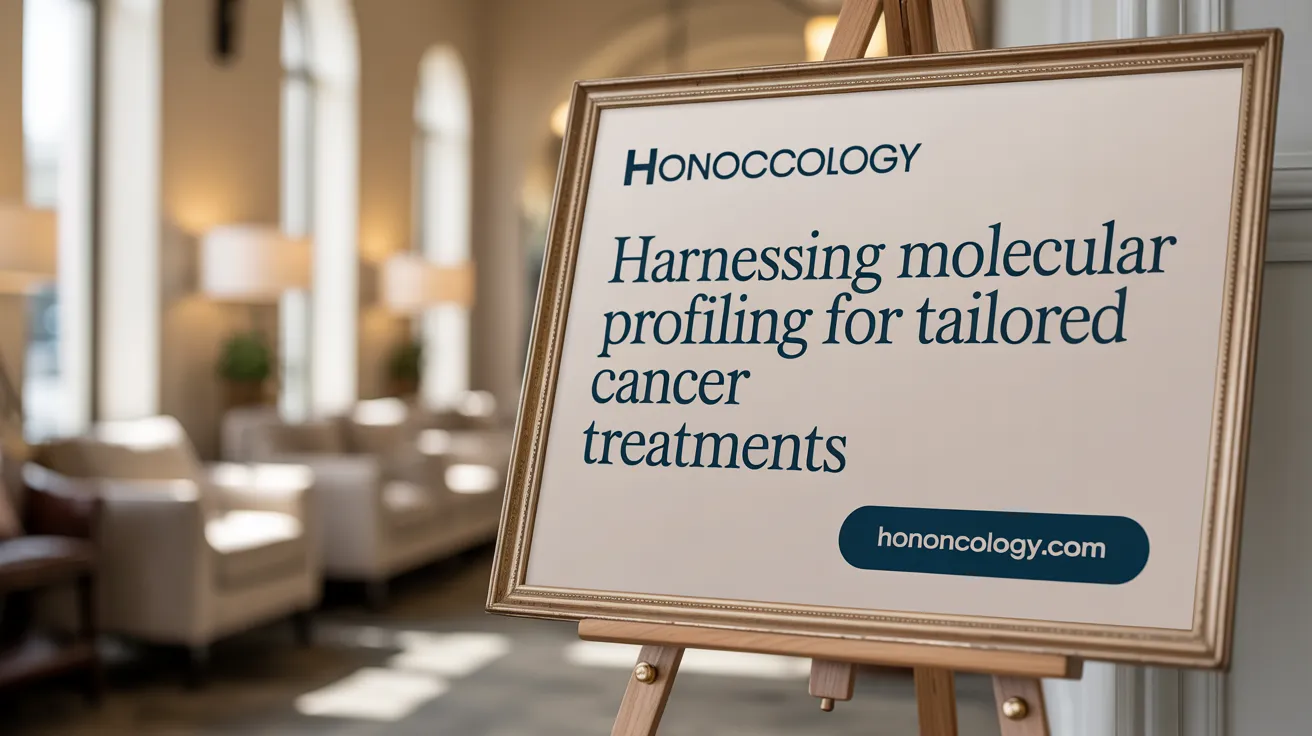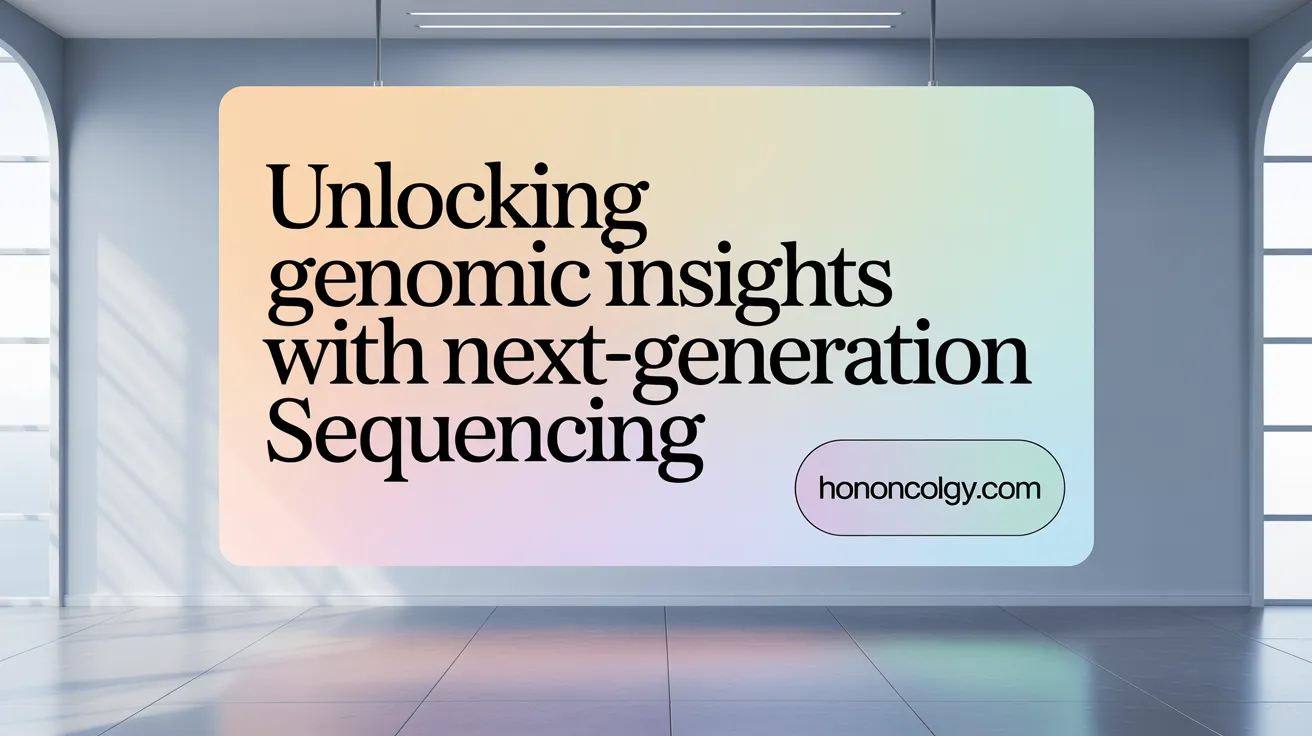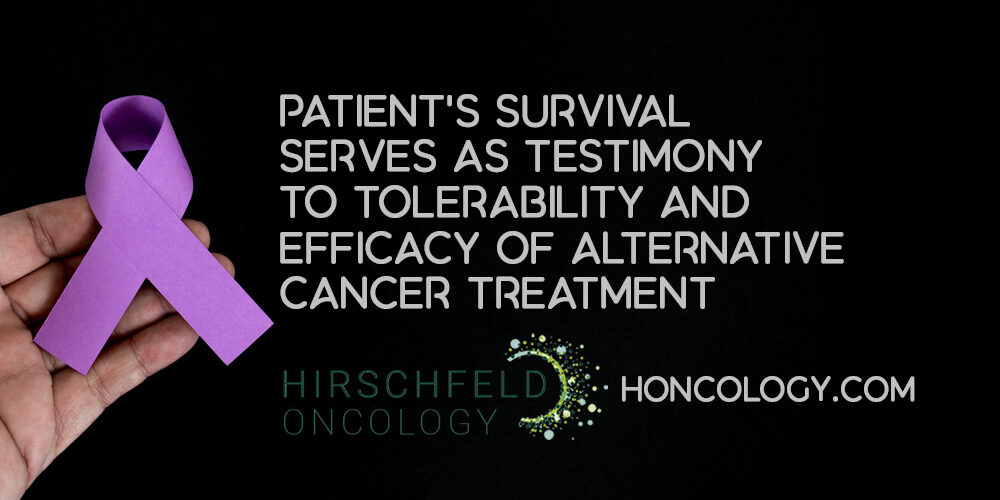Introduction to Personalized Cancer Therapy and Clinical Trials
Overview of Personalized Cancer Therapy
Personalized cancer therapy tailors treatment to individual patients based on their tumor's unique molecular and genetic characteristics. This approach moves beyond traditional, one-size-fits-all methods by targeting specific mutations or pathways driving the cancer. Techniques such as genomic profiling, including next-generation sequencing (NGS), enable the identification of actionable mutations like EGFR, BRAF, and ALK, allowing for more effective and less toxic targeted therapies.
Role of Clinical Trials in Advancing Treatment
Clinical trials are crucial for validating personalized therapies. Innovative trial designs like basket, umbrella, and platform trials are being used to test targeted treatments across diverse patient groups and tumor types based on molecular features rather than tissue origin. These trials accelerate drug approval for rare mutations and enable adaptive treatment strategies, making precision oncology more accessible.
Importance of Molecular Profiling and Biomarker-Driven Approaches
Molecular profiling through tissue and liquid biopsies provides vital information on tumor biology and helps predict treatment response and toxicity. Biomarker-driven therapies guide clinicians in choosing the most appropriate treatments. Multidisciplinary tumor boards and advanced bioinformatics support the interpretation of complex data, enhancing personalized therapy decisions and improving clinical outcomes.
Molecular Profiling and Biomarker-Driven Clinical Trials: Foundations of Precision Oncology

What is the role of molecular profiling in personalized cancer therapy?
Molecular profiling plays a critical role in personalized cancer therapy by identifying the unique genetic characteristics and tumor biomarkers present in each patient’s cancer. These profiles enable clinicians to match targeted treatments directly to the molecular drivers of the tumor, increasing treatment effectiveness and minimizing harm to normal cells. Techniques such as next-generation sequencing (NGS) analyze tumor tissue or liquid biopsies to reveal mutations or alterations, like EGFR or BRAF, that are actionable with specific drugs.
How do observational studies contribute to understanding treatment response?
Observational cohort studies, particularly those like the UCSD PREDICT cancer therapy study, greatly enhance our understanding of how molecular profiles impact treatment outcomes. By gathering comprehensive molecular, proteomic, and metabolic data from patients’ clinical specimens—including tissue, blood, and urine—these studies create detailed tumor biomarker profiles. These profiles are then correlated with clinical outcomes such as response rate, progression-free survival, and toxicity. Such real-world evidence helps refine predictive models to select the most effective therapy and manage side effects.
Integrating molecular, proteomic, and metabolic analyses
Modern profiling extends beyond genetics to include proteomics and metabolomics, providing a fuller picture of tumor biology. Researchers analyze proteins and metabolic pathways to discover additional biomarkers influencing drug response and resistance. This multi-dimensional profiling aids in understanding tumor behavior and pharmacodynamics (PD) and pharmacokinetics (PK), supporting more precisely tailored therapies. For more on these innovative approaches, see proteomic and metabolic analyses in cancer and Innovative Approaches for Cancer Treatment Current Perspectives and New Challenges.
Linking biomarkers to clinical endpoints
By comparing detailed tumor profiles with outcomes like stable disease duration, partial or complete responses, and treatment-related toxicities, researchers can evaluate the predictive value of specific molecular alterations. Studies are designed to follow patients longitudinally—up to 4 years in some cases—to observe survival benefits and adverse events. This approach promotes a patient-centered oncology model that continuously integrates biomarker data with treatment efficacy and safety, consistent with methods outlined in the cancer therapy response evaluation at UCSD.
| Component | Description | Impact on Precision Oncology |
|---|---|---|
| Molecular Profiling | Genetic sequencing of tumors and liquid biopsies | Identifies actionable mutations for targeted therapy (Genomic profiling and NGS in cancer) |
| Proteomic & Metabolic Analysis | Protein and metabolic pathway evaluation | Reveals additional treatment biomarkers and mechanisms (Multi-omics in cancer therapy personalization) |
| Observational Cohort Studies | Real-world data collection on molecular profiles and outcomes | Validates predictive biomarkers, informs therapy choice (UCSD PREDICT cancer therapy study) |
| Clinical Correlation | Linking biomarker data with response, survival, and toxicity | Enables personalized treatment planning and monitoring (Cancer treatment outcomes analysis |
These strategies form the foundation of modern precision oncology, where biomarker-driven clinical trials and observational research jointly enhance individualized cancer care. For further insight into the evolving landscape of precision oncology clinical trials design and biomarker-guided therapies, see Precision medicine clinical trials and biomarker-guided therapies.
Next-Generation Sequencing and Bioinformatics: Translating Genomic Data into Clinical Insights

How has next-generation sequencing advanced personalized oncology?
Next-generation sequencing (NGS technologies have revolutionized personalized cancer treatment by enabling rapid and comprehensive analysis of tumor genomes. This detailed genomic profiling identifies actionable mutations, such as EGFR in non-small cell lung cancer (NSCLC), BRAF V600E in melanoma, ALK rearrangements, and others. Detecting these specific alterations allows clinicians to select targeted therapies that directly inhibit the molecular drivers of an individual’s cancer, improving treatment effectiveness and reducing unnecessary toxicity.
Identification of actionable mutations
Key mutations and alterations uncovered by NGS include genes like EGFR, BRAF, ALK, KRAS G12C, PIK3CA, HER2 amplifications, and NTRK fusions. Each of these is linked to FDA-approved targeted agents or emerging therapies that can substantially improve patient outcomes. For example, EGFR inhibitors for EGFR-mutated NSCLC and BRAF inhibitors for melanoma have demonstrated significant gains in survival and response rates.
Bioinformatics pipelines: variant calling and data interpretation
The vast amount of raw sequence data generated by NGS requires sophisticated bioinformatics workflows to transform it into clinically meaningful insights. These workflows encompass quality control, sequence alignment, variant calling, annotation, and integration of multi-omics data such as transcriptomics and proteomics. Accurate identification and interpretation of genetic variants enable precise therapy matching and avoid misclassification.
Integration of AI and machine learning in treatment selection
Artificial intelligence (AI) in personalized medicine technologies further enhance personalized oncology by analyzing complex genomic and clinical data sets. AI assists in uncovering novel biomarkers, predicting treatment response, optimizing combination therapies, and continuously updating patient-specific treatment plans based on real-time data. This integration offers an adaptive, data-driven approach to personalized cancer care, maximizing therapeutic benefit while minimizing adverse effects.
Innovations in Therapeutic Modalities: From Targeted Therapies to Immunotherapy and Gene Editing

What are the emerging therapy types in personalized oncology?
Emerging therapies in personalized oncology encompass several innovative modalities, each designed to target tumors more precisely and effectively while minimizing damage to healthy tissue. For a comprehensive overview of emerging cancer treatment modalities, including antibody-drug conjugates and gene editing technologies, see this review.
Development of small molecule inhibitors and antibody-drug conjugates
Small molecule kinase inhibitors, such as imatinib and sotorasib, inhibit cancer cell signaling pathways crucial for tumor growth. Antibody-drug conjugates (ADCs) link antibodies targeting tumor-specific antigens with cytotoxic drugs, enabling selective delivery of chemotherapy directly to cancer cells. Examples include trastuzumab deruxtecan and sacituzumab govitecan, which target HER2 and TROP2 proteins respectively to improve therapeutic specificity.
Adoptive cell therapies: CAR-T, CAR-NK, TIL
Adoptive cell transfer therapies have revolutionized personalized cancer treatment. CAR-T therapy engineers a patient’s T cells to express chimeric antigen receptors that recognize tumor antigens, showing strong clinical success in hematologic malignancies. Similarly, CAR-NK (natural killer cells) and tumor-infiltrating lymphocytes (TIL) therapies exploit immune cells for targeted tumor destruction, tailored to individual tumor antigen profiles.
Gene editing technologies like CRISPR in cancer treatment
Gene editing technologies, especially CRISPR/Cas9, offer precise genetic modifications to both tumor cells and immune cells. They enable correction of oncogenic mutations or enhancing immune cell function. Although still emerging in oncology, CRISPR-based tools hold promise to create more effective, durable cancer treatments by directly targeting the genetic drivers of malignancy.
Nanomedicine and enhanced drug delivery systems
Nanomedicine employs biodegradable nanoparticles (e.g., liposomes, polymeric particles) to enhance drug bioavailability and target delivery. These carriers can be functionalized for active targeting of tumor-specific receptors, improving drug accumulation in tumors and reducing systemic toxicity. Nanoparticles also enable stimulus-responsive drug release and image-guided therapy, advancing precision in cancer treatment. For details, refer to nanomedicine drug delivery systems and innovative nanomedicine approaches in oncology.
Overall, these emerging therapies—ranging from molecular inhibitors and targeted ADCs to immunotherapies, gene editing, and nanotechnology—represent a shift toward more personalized, effective oncology care tailored to each patient's tumor biology.
Advanced Clinical Trial Designs Accelerating Personalized Therapy Development

How are new clinical trial designs advancing personalized cancer treatment?
New clinical trial designs such as master protocols—encompassing basket trials, umbrella trials, and platform trials—are revolutionizing personalized cancer therapy by efficiently testing targeted treatments based on molecular tumor profiles. These innovative designs allow researchers to evaluate therapies in patient subgroups defined by specific biomarkers rather than traditional tumor type alone.
Basket trials enroll patients across multiple tumor types sharing a common genetic alteration, enabling drug approvals for rare mutations regardless of cancer origin. For example, the NCI-MATCH trial investigates targeted agents matched to molecular abnormalities across diverse cancers.
Umbrella trials stratify patients within a single cancer type into molecular subgroups, assigning tailored therapies accordingly. Lung-MAP for lung cancer exemplifies this approach, offering personalized options based on tumor genomics.
Platform trials like STAMPEDE and I-SPY 2 are adaptive, allowing simultaneous evaluation of multiple therapies and modification of treatment arms over time. This flexibility accelerates drug development and addresses tumor heterogeneity more effectively.
Beyond these, emerging trial concepts such as Precision Pro and Dynamic Precision aim to integrate biological rationality and tumor evolution dynamics, supported by artificial intelligence (AI). These approaches support adaptive treatment strategies, optimizing outcomes in individual patients.
Overall, these advanced trial designs reduce development timelines, promote biomarker-guided drug approvals, and foster more precise, patient-centered cancer care.
Overcoming Drug Resistance: Modeling and Strategies in Personalized Cancer Treatment

What strategies are used to manage drug resistance in personalized cancer therapy?
Drug resistance in cancer arises from both genetic mutations and non-genetic cellular plasticity. These mechanisms enable tumor cells to survive despite therapy, leading to treatment failure. For a detailed exploration of these resistance mechanisms and personalized cancer treatment strategies, see Resistance mechanisms in cancer and personalized therapy.
Mechanisms of genetic and non-genetic resistance
Genetic resistance is often driven by irreversible mutations, while non-genetic resistance involves reversible changes in cell states known as cellular plasticity. Both types contribute to tumor heterogeneity and complicate treatment. Insights into these mechanisms and modeling of tumor heterogeneity are discussed in Mathematical modeling of drug resistance in cancer.
Mathematical modeling frameworks to inform treatment sequencing
Researchers have developed comprehensive mathematical models incorporating tumor cell heterogeneity and the dynamic evolutionary processes that lead to resistance. Such models simulate millions of virtual patients to predict tumor response and optimize therapy sequences. This approach aligns with the Dynamic Precision Medicine (DPM) framework combining sequential and combination therapies to improve treatment efficacy.
Dynamic Precision Medicine approach combining therapies
Effective management strategies involve combining standard treatments with cycling or sequential therapies that aim to address genetic and non-genetic resistance simultaneously. This dynamic approach has demonstrated superior outcomes in simulated studies. For further information on these innovative treatment strategies, refer to Integrative modeling of resistance and therapy optimization.
Importance of addressing tumor heterogeneity and evolution
Considering the evolving tumor landscape and heterogeneity is crucial. Personalized treatment strategies informed by integrative modeling can better prevent resistance development and improve long-term patient outcomes by adapting therapy over time. Comprehensive reviews on the importance of tumor heterogeneity and personalized oncology are available in Precision oncology and treatment adaptation.
Functional Precision Medicine: Real-Time Treatment Guidance Using Ex Vivo Drug Sensitivity Testing

How does functional precision medicine improve personalized cancer therapy?
Functional precision medicine (FPM) enhances personalized cancer therapy by testing tumor samples directly against a panel of FDA-approved cancer drugs outside the patient’s body. This ex vivo drug sensitivity testing (DST) identifies which therapies are most effective for the individual’s specific cancer. By revealing the optimal drug candidates before treatment, FPM enables clinicians to tailor treatment plans with greater accuracy and improves patient outcomes.
Principles of functional precision medicine (FPM)
FPM revolves around real-time functional assays performed on living tumor specimens. It combines drug sensitivity testing (DST) with genomic profiling in cancer to deeply characterize the patient’s cancer biology and therapeutic vulnerabilities. This approach contrasts with solely genetic biomarker-driven methods by providing immediate evidence of how cancer cells respond to multiple drugs, enabling rapid therapy selection.
Clinical trials exposing tumor samples to FDA-approved drugs
Several FPM-related clinical trials have been conducted, including collaborative studies at institutions like Florida International University (FIU) and Nicklaus Children’s Hospital. These trials involve exposing patient tumor samples to over 120 FDA-approved cancer drugs, assessing the tumor’s responsiveness in vitro. The large drug panels ensure a comprehensive evaluation of treatment options, covering conventional chemotherapy, targeted agents, and novel therapies.
Correlation of drug sensitivity with patient outcomes
Trial results have demonstrated that about 83% of patients receiving FPM-guided treatments showed clinical improvement. This includes tumor remission, delayed progression, and enhanced survival rates. The correlation between in vitro drug sensitivity profiles and actual patient responses underlines the predictive power of FPM in guiding effective treatment decisions (source.
Case studies demonstrating effectiveness in pediatric and adult cancers
One notable case is Logan Jenner, a pediatric patient with acute myeloid leukemia, who achieved remission within 33 days after receiving treatment guided by FPM, remaining cancer-free for more than two years post-therapy. These promising outcomes highlight the applicability of FPM across cancer types and age groups, supporting its expansion into broader clinical use (source.
This evolving paradigm of cancer care holds potential to deliver safer, more effective, and individualized therapy choices, transforming the landscape of precision oncology.
Personalized Immunotherapy Approaches: Enhancing Response through Novel Agents and Biomarkers
What are the new directions in personalized cancer immunotherapy?
Innovations in personalized cancer immunotherapy focus on overcoming tumor immune evasion and the complexities of the tumor microenvironment (TME). Recent strategies include novel immunomodulators that transform immunologically “cold” tumors—those unresponsive to immune attack—into “hot” tumors that attract immune cells. This transformation increases tumor immunogenicity, improving responsiveness to treatments like immune checkpoint inhibitors [Advancing cancer therapy].
Immune evasion and tumor microenvironment challenges
Tumors employ mechanisms such as immune suppression and metabolic reprogramming to evade immune destruction. The tumor microenvironment often contains factors that blunt immune responses, presenting a challenge for effective immunotherapy. Understanding these interactions at a molecular level is key for designing successful interventions Advancing cancer therapy].
Novel immunotherapies like AlloStim® for resistant cancers
One promising agent is AlloStim®, an immunotherapy evaluated in clinical trials for metastatic colorectal cancer normally resistant to immunotherapy. AlloStim® works by converting cold tumors into hot ones, enabling better responses to immune checkpoint inhibitors. Preliminary trial results reveal promising median overall survival improvements (~16.4 months), offering hope for refractory cancers that lack effective options [Azriel Hirschfeld clinical trials].
Role of biomarkers such as CD74 in predicting immunotherapy response
Biomarkers are critical for personalizing immunotherapy. CD74, for example, has emerged as a predictor of responsiveness, helping stratify patients likely to benefit from immune-based treatments. Integrating biomarker analysis enhances patient selection, leading to improved outcomes and reduced unnecessary exposure to ineffective therapies Advancing cancer therapy].
Combining immunotherapy with molecular and metabolic targeting
Combining immunotherapy with strategies targeting tumor metabolism and molecular pathways holds promise. For instance, targeting metabolic vulnerabilities in non-small cell lung cancer alongside immune modulation can enhance efficacy. These combination approaches tackle multiple resistance mechanisms simultaneously, improving durable responses Advancing cancer therapy].
Together, these advances demonstrate a multi-pronged, biomarker-guided approach to personalize immunotherapy, enabling tailored treatments that overcome immune resistance and improve clinical outcomes in cancer patients.
Liquid Biopsies and Non-Invasive Monitoring in Precision Oncology
How are liquid biopsies transforming personalized cancer care?
Liquid biopsies utilize liquid biopsies and circulating tumor DNA (ctDNA) analysis to non-invasively capture the genetic profile of cancers in real time. Unlike traditional tissue biopsies, which require invasive procedures and may not reflect tumor heterogeneity or changes over time, liquid biopsies provide a dynamic snapshot of tumor genetics through a simple blood draw. This minimally invasive approach enables earlier detection of emerging resistance mutations and facilitates ongoing treatment monitoring, allowing clinicians to adapt therapies promptly for improved outcomes.
Circulating tumor DNA (ctDNA) analysis for tumor profiling
ctDNA testing identifies tumor-specific genetic alterations shed into the bloodstream from cancer cells. This genomic profiling reveals actionable mutations, guiding personalized targeted therapies. For example, ctDNA can detect mutations in genes like EGFR or BRAF that inform drug selection. Additionally, ctDNA analysis is useful in tracking tumor burden and response to treatment without repeated biopsies.
Early detection of resistance and treatment monitoring
Liquid biopsies enable clinicians to identify genetic changes that confer resistance to therapy before clinical progression is evident. This allows timely therapeutic switches or combination treatments to overcome resistance. Regular ctDNA monitoring also helps evaluate treatment efficacy and detect minimal residual disease, improving disease management and patient prognosis.
Advantages over traditional tissue biopsies
- Minimally invasive: reduces patient risk and discomfort
- Dynamic monitoring: captures temporal tumor evolution
- Broad tumor representation: reflects genetic heterogeneity across primary and metastatic sites
- Faster results: facilitates quicker clinical decisions
Challenges and potential clinical applications
Despite promising utility, challenges remain including standardization of assays, sensitivity in low tumor-burden settings, and interpretation of complex genomic data. Cost and access disparities may also limit widespread adoption. Nonetheless, liquid biopsy has become an essential tool in precision oncology workflows, complementing tissue analysis and expanding possibilities for personalized cancer care.
Integration of Multi-Omics and Artificial Intelligence for Enhanced Personalized Therapy
Why is integrating multi-omics data and AI important in personalized oncology?
Integrating data from genomics, transcriptomics, proteomics, and metabolomics offers a comprehensive view of tumor biology, capturing the genetic and molecular complexity that drives cancer heterogeneity. This broad biological insight is critical to understanding how tumors differ not just genetically but also in their gene expression, protein activity, and metabolic states (Multi-omics in cancer therapy personalization, Multi-omics research for cancer therapies).
Combining genomics, transcriptomics, proteomics, and metabolomics
Multi-omics approaches combine various layers of biological information to dissect cancer mechanisms more precisely. Genomics reveals DNA mutations and structural variants; transcriptomics examines gene expression; proteomics explores protein abundance and modifications; and metabolomics assesses changes in cellular metabolism. This integration allows clinicians to identify biomarkers that would be missed by single-omic analysis alone, enabling deeper characterization of tumors for more effective targeting (Nanomedicine and multi-omics research for cancer therapies, Personalized medicine at Purdue Institute for Cancer Research).
Use of AI to analyze multi-modal data
Artificial intelligence (AI) and machine learning algorithms are essential tools for handling the vast amounts of complex, multi-dimensional omics data. They can detect patterns, predict molecular interactions, and classify tumor subtypes beyond human capabilities. AI models support interpretation of heterogeneous data types, helping to translate raw biological information into actionable clinical insights for personalized therapy planning (AI in personalized medicine and bioinformatics workflows, Advances in personalized medicine.
Predictive models for treatment response and toxicity
By leveraging multi-omics datasets, AI-driven predictive models can forecast patient responses to specific treatments and potential toxicity risks. This helps oncologists tailor therapies based not only on tumor genetics but also on how a patient’s tumor biology may influence treatment efficacy and side effects, thereby improving safety and outcomes (UCSD PREDICT cancer therapy study, Personalized medicine advances with drug sensitivity testing).
Improving therapy personalization and clinical decision-making
The combined use of multi-omics and AI facilitates highly personalized cancer care by enabling dynamic therapy selection, adaptive treatment monitoring, and rapid identification of resistance mechanisms. Multidisciplinary tumor boards can use these data insights to guide clinical decisions, optimizing treatment sequences and combinations to fit individual patient profiles, ultimately advancing precision oncology (Advances in personalized cancer medicine and molecular tumor boards, Precision oncology clinical trials and trial designs).
Expanding Access and Addressing Disparities in Precision Oncology Therapies
What are the challenges and efforts related to access to personalized cancer treatments?
Access to personalized cancer therapies varies significantly around the world, with notable regional disparities in the approval and reimbursement of oncology drugs. For instance, many novel cancer drugs launched globally between 2014 and 2023 have yet to be registered or reimbursed in regions such as the Gulf Cooperation Council (GCC) countries and parts of Africa. Only about half of these therapies receive market authorization in the European Union, with even lower registration rates in the Middle East and African nations (Oncology Therapy Access in the Era of Personalized Medicine).
Healthcare infrastructure limitations and budget constraints further complicate equitable delivery. Reimbursement timelines can be lengthy, sometimes exceeding two years in certain areas, hindering timely patient access to cutting-edge treatments. In African countries, many therapies are only reimbursed through private insurance channels, limiting access for broader populations (Oncology Therapy Access in the Era of Personalized Medicine.
However, proactive government initiatives are making progress. Programs like Saudi Arabia’s VISION 2030 and the UAE’s Genome Program have catalyzed increased availability of immunotherapies and monoclonal antibodies in the GCC, gradually improving access. These efforts represent significant steps toward integrating precision oncology into standard care despite ongoing systemic challenges (Oncology Therapy Access in the Era of Personalized Medicine.
Overcoming barriers such as complex regulatory requirements, high therapy costs, and disparities in clinical evaluation methods remain essential to ensure that precision medicine benefits all patients equitably. Expanding access depends on coordinated strategies involving regulatory bodies, healthcare providers, and policymakers to streamline approvals and reimbursement while investing in healthcare infrastructure (Oncology Therapy Access in the Era of Personalized Medicine.
Role of Oncologists Like Dr. Azriel Hirschfeld in Translating Personalized Therapy to Clinical Practice
How do clinicians implement personalized cancer therapy effectively?
Clinicians such as Dr. Azriel Hirschfeld play a crucial role in translating personalized cancer therapy into practical patient care. With over two decades of experience in hematology and oncology, Dr. Hirschfeld brings a deep clinical expertise spanning a broad range of cancers, including pancreatic, biliary tract, liver, ovarian, colorectal, breast, lung, and stomach cancers. This expertise allows for nuanced treatment planning that considers each patient’s unique cancer biology (Dr. Azriel Hirschfeld, hematology and oncology specialist).
Personalized care hinges on integrating innovative therapies alongside standard treatments. Dr. Hirschfeld incorporates molecular profiling and biomarker analyses to tailor therapies, often combining traditional chemotherapy and radiation with novel immunotherapies and targeted agents. His involvement in clinical trials evaluating promising new immunotherapies—such as AlloStim® for metastatic colorectal cancer—demonstrates commitment to advancing personalized treatment options for patients with traditionally hard-to-treat tumors (Azriel Hirschfeld clinical trials).
Importantly, Dr. Hirschfeld emphasizes compassionate, patient-centered care. This approach includes attentive communication, thorough explanation of treatment options, and respect for patient preferences, which are essential for effective personalized therapy. By integrating cutting-edge scientific advances with a focus on individualized patient needs, oncologists like Dr. Hirschfeld embody the evolving role of clinicians at the forefront of precision oncology (Personalized medicine at Purdue Institute for Cancer Research.
Future Perspectives on Personalized Cancer Therapy and Clinical Trials
Ongoing Research and Trials Pushing Frontiers
Personalized cancer therapy continues to evolve through extensive research and innovative clinical trials worldwide. Studies like the UCSD PREDICT project aim to correlate tumor biomarker profiles with patient outcomes, analyzing molecular, proteomic, and metabolic data to tailor treatments effectively. Novel immunotherapies, such as AlloStim® for metastatic colorectal cancer, show promising results by converting immune-resistant tumors into responsive targets.
Combining Genomic, Functional, and Immunological Insights
The future of precision oncology lies in integrating genomic profiling, drug sensitivity testing, and immunological markers. Platforms that combine next-generation sequencing with functional drug sensitivity assays enable identification of optimal therapies. Personalized vaccines targeting neoantigens and adaptive immunotherapies, informed by tumor genetics and microenvironment, bring highly specific interventions to the clinic.
Adaptive, Patient-Centered Treatment Strategies
Adaptive trial designs, including basket, umbrella, and platform trials, facilitate personalized treatment by matching therapies to the specific molecular alterations of individual tumors. This approach allows dynamic modification of treatment arms based on patient response and emerging data, enhancing therapeutic precision and speed of drug development.
Hope for Improved Survival and Quality of Life
Together, these advances promise improved survival rates and better quality of life for cancer patients. By harnessing the power of molecular insights and innovative trial designs, precision oncology offers treatment plans that are increasingly effective, less toxic, and tailored to the unique biology of each patient's cancer.





.png)


.png)
.png)




